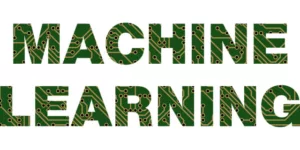Few data-driven technologies provide more significant opportunities, such as machine learning, to gain value from the Internet of Things (IoT) initiatives. In IoT solutions, the exponential growth of data collected from sensors and machine learning capabilities will give companies unprecedented opportunities to drive market value and create a competitive advantage.
AI Inference
There are two distinct stages of Machine Learning: training and inference. Generally, preparation takes a long time and can be heavy on a budget. The inference is the process of taking the model and installing it on a computer. It then processes incoming information (usually images or video) to search for and recognize whatever it has been trained to recognize.
AI capabilities based on NXP CPU
Deep learning can typically be carried out in the Cloud or by using extremely high-performance computing platforms, also utilizing several graphics cards to speed up the process. The Cloud can also perform inference, which works well with sensitive workflows that are not time-critical. However, the inference is now generally carried out on a local computer to evaluate the data, which significantly reduces the time used to produce a result (i.e., recognizing someone’s face on a watch list).
System developers have become more conscious that neural networks function is not inherently the best solution as machine learning-based systems become more deeply embedded in our everyday lives.
The truth is that, while there are questions about how it could work in some circumstances, many industrial and automotive systems continue to evolve.
For several years, at NXP, we have been investing in building our AI capabilities and are concerned with such deficiencies. Your mobile assistant is far from the implications that may arise in an industrial or healthcare setting by wrongly inferring a spoken phrase.
How does it work with i.MX8M Plus?
So now, there is a need for the edge of ML. The sum of tera operations per second typically referred to as TOPS, an acronym for Tera (trillion) Operations Per Second, is one way to calculate ML accelerators. It turns out that i.MX 8M Plus provides 2.3 TOPS of acceleration for inference in consumer and industrial Internet of things endpoint systems, suitable for applications such as multiple object detection, speech recognition up to 40,000 words, or even medical imaging (MobileNet v1 at 500 images per second). It can simultaneously perform various intricate neural networks.
AI Training
A fundamental part of every AI project is training. It’s completely critical that everyone involved in the development of your model knows how it functions. It may be shocking, though, just how many individuals see the mechanism as challenging to comprehend. Even if all the words are well known to those not working directly with data, training may seem pretty abstract. This general lack of understanding may prove to be a significant obstacle on the way to your business’s success.
For instance, we’ll pretend to have a vast data collection of different names for cats and dogs. We want to be able to categorize the names according to pets as our model. There are some essential things that we need to review before training. For example, check that the data is of high quality. Data must be clean and ordered for all machine learning, with no duplicates or trivial samples. Rogue samples or a disorganized structure may destroy the entire project, so we must thoroughly review the information.
Now, as you would teach your toddler to ask for food with certain gestures or words, you do the same with your data. It’s not that far from AI, but the learning is performed by a neural network (NN).
The method is almost the same: you need to show it how to do the tasks right if you want the NN to do the assigned job.
Wrapping up
Make sure you always keep your fingers on the pulse of the most recent technologies. We hope our article helped you to learn something new.








